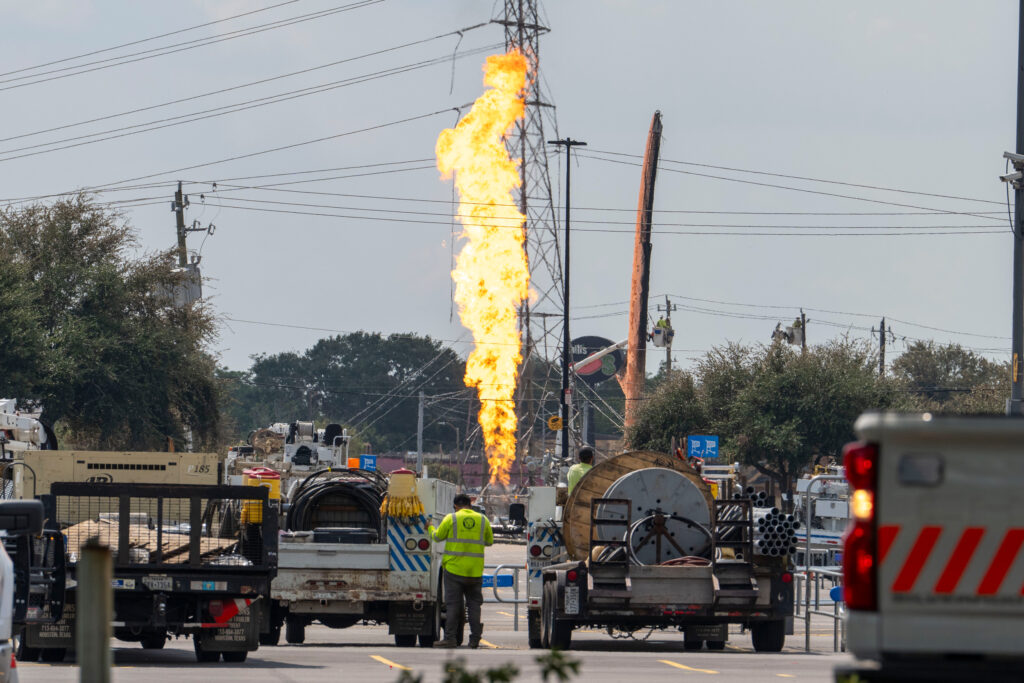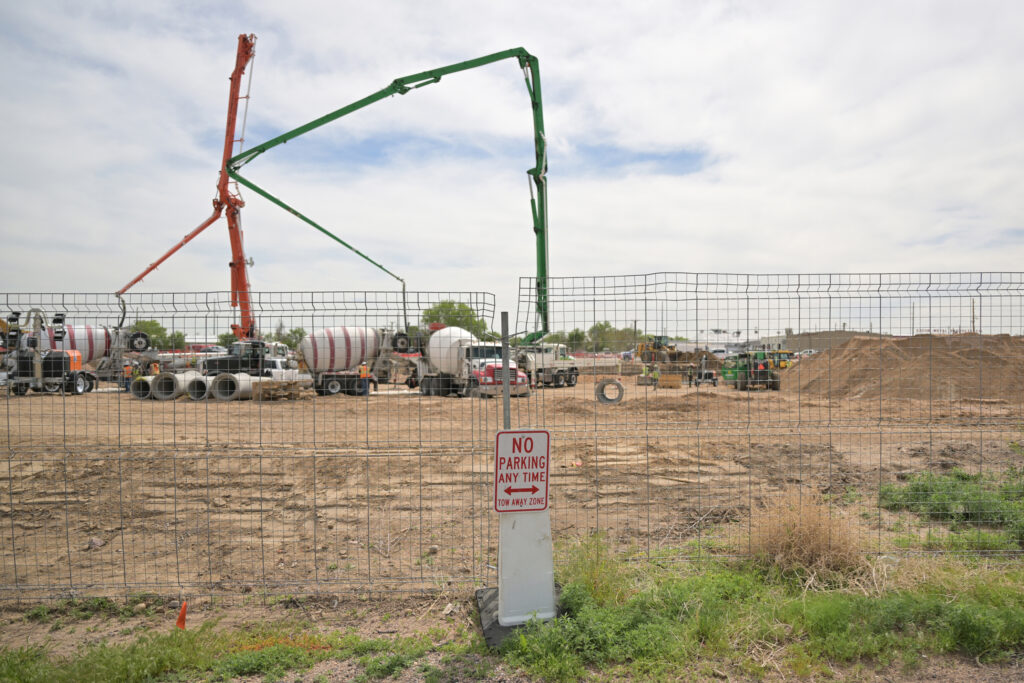The Marañón River, which flows from Peru’s Andes mountains into the Amazon river, has “intrinsic” value and possesses the rights to exist, flow, and be free from pollution, among other rights, a Peruvian trial court ruled Monday.
The case marks the first time Peru has legally recognized the so-called rights of nature, which is the idea that certain ecosystems, individual species or the Earth itself possess inherent rights to exist, regenerate and evolve.
The Nauta provincial court, located in Peru’s Loreto region, also ruled that Indigenous organizations and various government agencies are “guardians, defenders and representatives of the Marañón River and its tributaries,” meaning those entities have the authority to speak on behalf of the waterways in governmental decision making and in court.
We’re hiring!
Please take a look at the new openings in our newsroom.
See jobs
Around the globe, it has long been common for entities like corporations, governments and universities to have legal personhood, meaning that they have certain rights and can, through human representatives, go to court to enforce them.
Attorney Martiza Quispe Mamani, who represented the Indigenous Kukama plaintiffs in the lawsuit, hailed the ruling as “historic” and a “transcendental milestone for the protection not only of the Marañón River but also of all rivers contaminated by extractive activities.”
For decades, the Marañón River, which runs near one of Peru’s highest oil producing zones, has been affected by dozens of oil spills. Kukama Indigenous communities and others in the Loreto area rely on the Marañón River ecosystem as a source of sustenance, drinking water and for the irrigation of crops.
The health of the waterways have also been affected by hydroelectric dams and other development, including the “Amazon Waterway,” a multimillion dollar dredging project in the Peruvian Amazon, including portions of the Marañón River, that is aimed at making waterways more accessible to boats.

The Nauta court’s recognition of the Marañón River’s rights does not immediately affect oil production or other potentially nature-harming activities, but could set the stage for future litigation. As its guardians, Indigenous organizations can now go to court on behalf of the Marañón River to block permitting for activities like mining or drilling that could infringe on the river’s rights. Those groups could also ask courts to order polluters to carry out restoration and clean up of the waterways.
But that’s only if the ruling withstands an expected appeal of the order by defendants in the case, who include representatives of various governmental agencies and the state oil company Petroperú.
As part of the ruling, the Nauta court also ordered Petroperú to update its environmental management plan related to an oil pipeline notorious for leaks and spills, and ordered the Peruvian government to set up a “specialized water resource basin” for the benefit of the Marañón River and its tributaries.
The Peruvian government did not immediately respond to a request for comment on the ruling. A spokesperson for Petroperú, one of the defendants in the case, said the company was evaluating the portions of the order that pertain to the company.
Mariluz Canaquiri Murayari, president of Huaynakana Kamatahuara Kana, the federation of Kukama Indigenous women behind the lawsuit, vowed to continue fighting for the rights of the Marañón ecosystem and Kukama people.
“Our work is fundamental for Peru and the world: to protect our rivers, territories, our own lives, all of humanity, and the living beings of Mother Nature,” Murayari said in a written statement.
An “Undeniable Relationship”
Filed in September of 2021 by the Huaynakana Kamatahuara Kana and supported by Peru-based Instituto Defensa Legal, the lawsuit’s primary objective was to obtain judicial recognition that the Marañón River and its tributaries possess inherent legal rights.
In arguing against that outcome, the Peruvian environmental ministry told the court that it was the purview of the legislature, and not the judiciary, to decide whether to depart from the country’s existing “anthropogenic philosophical doctrine.”


While the Nauta court acknowledged that neither Peru’s constitution nor its existing laws recognized that nature has rights, the opinion went on to emphasize that legal precedent in international law and adopted by Peru, as well as rulings from the country’s own constitutional court, provided a basis for judicial recognition of the Marañón River ecosystem’s rights.
Those precedents from the Inter-American Court of Human Rights, the Convention on Biological Diversity and the International Labor Organization, among others, have established that there is an “undeniable relationship” between human rights and environmental degradation, the court said.
In particular, the Nauta court focused on the human right to a healthy environment, recognized by Peru and over 150 other countries, writing that the right safeguards elements of the natural world like forests, rivers and oceans.
“It is about protecting nature and the environment not only because of its connection with a utility for human beings or because of the effects that its degradation could cause on other people’s rights, such as health, life or personal integrity,” the court wrote. “But due to its importance for the other living organisms with which the planet is shared, also deserving of protection in themselves.”
The opinion also concentrated on the precautionary principle, a long recognized but often overlooked legal doctrine requiring that in the absence of adequate scientific evidence, it is better to avoid certain risks that could lead to irreversible damage of ecosystems. The Nauta court noted that an important aspect of the precautionary principle is the reversal of the burden of proof, requiring those wishing to engage in potentially nature-harming activities to prove that their actions will not damage the environment.
“An indispensable part of the implementation of the right to a balanced environment is the adoption of a precautionary orientation in the interpretation and decision-making in environmental matters,” the Nauta court said, noting that existing Peruvian law recognizes the precautionary principle.
Constanza Prieto Figelist, Latin America director for the U.S. based advocacy organization Earth Law Center, said the precautionary principle has emerged as a central part of rights of nature jurisprudence. Courts and laws in Ecuador, Colombia and Panama have cited it in decisions enforcing or recognizing the rights of ecosystems and species.
“The legal framework of the rights of nature is not only made up of the articles that grant rights to nature but it also imposes a series of obligations on the state to respect, protect and guarantee the rights of nature, and that has included the precautionary principle,” said Prieto Figelist, whose organization provided legal support to the plaintiffs.
This story is funded by readers like you.
Our nonprofit newsroom provides award-winning climate coverage free of charge and advertising. We rely on donations from readers like you to keep going. Please donate now to support our work.
Donate Now
Above all, Prieto Figelist said last week’s ruling is important because it advances a growing body of law that connects human rights, and in particular the rights of Indigenous peoples, to the wellbeing of ecosystems.
Twenty other countries in the Americas have recognized the jurisdiction of the Inter American Court of Rights, many of which have also nationally recognized the human right to a healthy environment and the precautionary principle. The Nauta court’s decision “opens the door for practically all countries in Latin America to move towards the legal framework of the rights of nature,” Prieto Figelist said.
The Marañón River and tributaries full list of rights, as set forth in the court’s order includes:
- The right to flow;
- The right to exist in and support a healthy ecosystem;
- The right to flow free from all contamination;
- The right to feed and be fed by its tributaries;
- The right to biodiversity;
- The right to be restored;
- The right to the regeneration of its natural cycles;
- The right to the conservation of its ecological structure and functions; and
- The right to protection, preservation, and recovery.

















